Nutrition Games for Kids
Nutrition Worksheet, Games, and Activities for Healthy Eating
Free Download Below
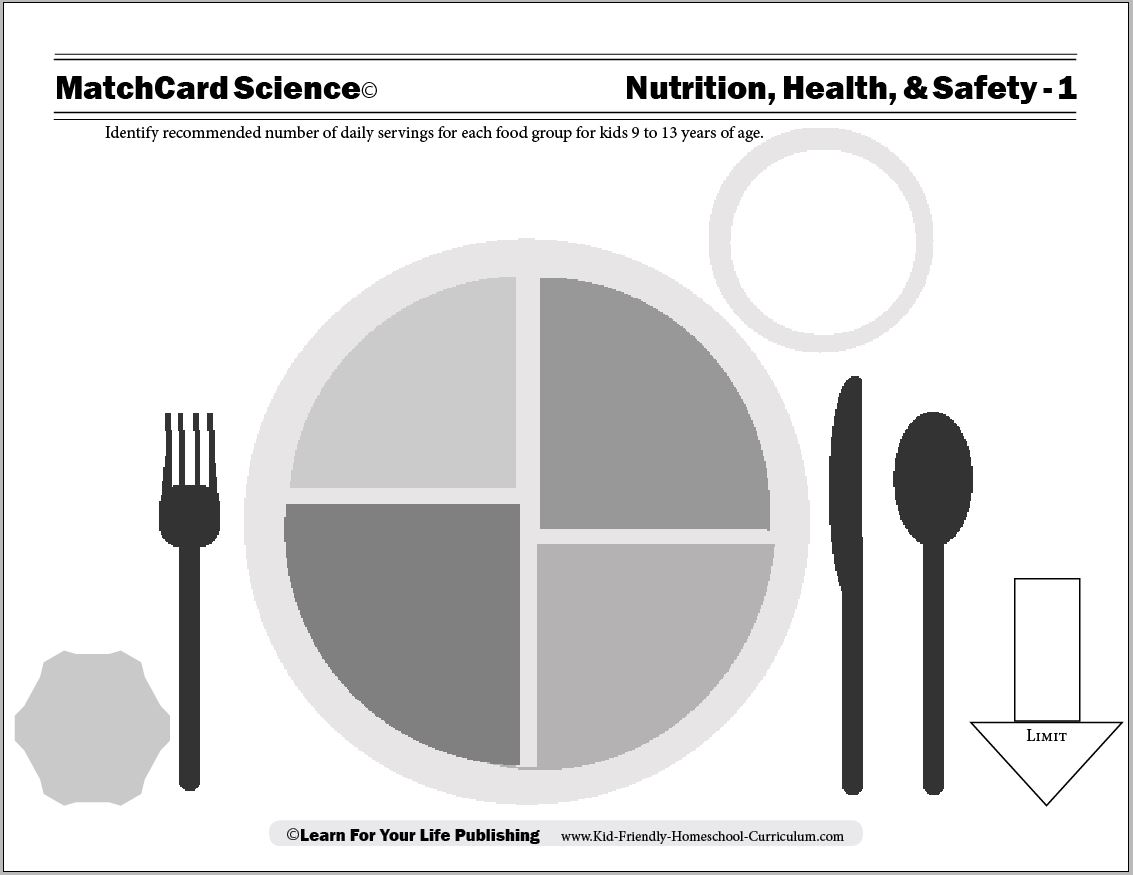
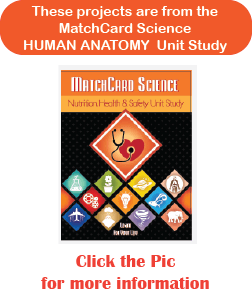
Let's Get Started
Give the student an extra copy of the worksheet with the five unidentified food groups. Have them play a guessing/brainstorming game to see if they can identify the food groups.When they get one correct, have them write it on their sheet. This worksheet they write on will not be the same one that they use as a MatchCard, so make sure you print two copies of the student copy. They can color their sheet in if they desire.
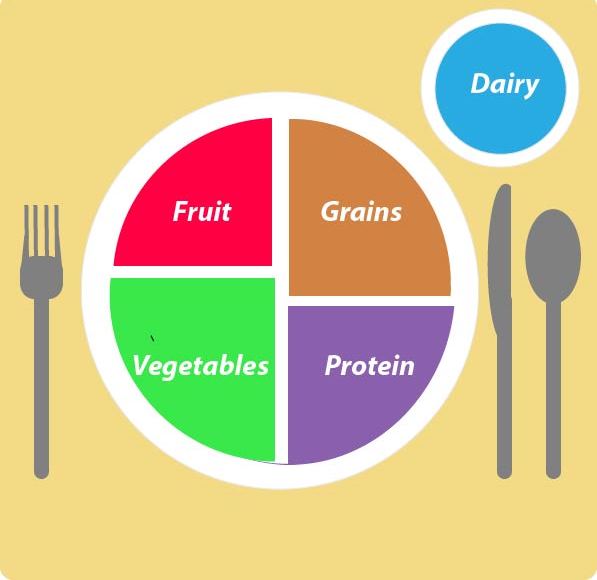
Diet Journal
At some point in the lessons, the student should keep a journal of everything they eat for 3 days. They can compare the amount they consume with the recommended amounts.Have him or her identify the strong points of their diet. What are they doing right?
Also have them identify the weaknesses. They can set a goal to improve one thing.
MatchCard Science Nutrition Facts Worksheet
Objective: Identify the recommended number of daily servings from each food group for kids 9 to 13 years of age.MatchCard: Download below.
The information pieces will be applied to the correct location on the My Plate diagram. See below for games and activities to teach the different facts about nutrition.
Print the Nutrition Facts MatchCard


Click image to go to download.
This is MatchCard #1 of the Nutrition, Health, and Safety Unit Study. Find more information on MatchCard Science below.
Nutrition Facts and Games
We are using the recommended daily amounts for children age 9 to 13 from the USDA site www.myplate.gov. Individuals who are younger or older have different recommended amounts. Also, children who are athletic may require more calories.Grains
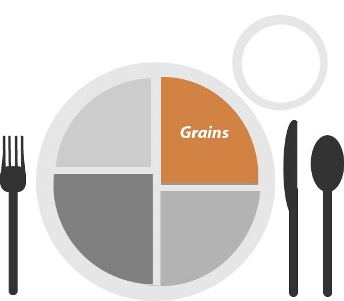
The recommended amount for girls is 5 ounce equivalents and for boys 6 ounce equivalents per day.
One Ounce Grain Equivalents
- 1 slide of bread
- 1 cup cereal
- 1/2 cup cooked rice
- 1/2 cup pasta
- 7 crackers
- 3 cups popcorn
The Grain Game
Serve Yourself
It is so easy to consume more carbohydrates than we think. In this game, students will try to identify how much half a cup really is. It can be a contest if more than two children are playing.
Have cooked rice or cooked pasta in a serving bowl. Also have your regular serving spoon in the bowl. The child(ren) will serve themselves and try to get one serving (a half cup) on their plate.
After they have served themselves half a cup, measure each child's portion. This is easier to do with rice and smaller pieces of pasta like ortza or macaroni than long spaghetti noodles.
How close did they get?
Protein
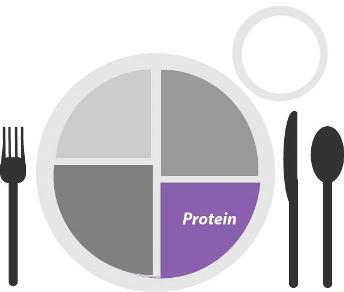
Boys and girls both need 5 one ounce equivalents a day.
In addition, it is recommended they have 8 ounces of seafood per week, usually in the form of two 4 oz servings.
Students should be aware that many meats can be a source of large amounts of fat in addition to protein. Not all proteins are created equal.
One Ounce Protein Equivalents
- 1 ounce meat, poultry, fish
- 1 tablespoon peanut butter
- 1/2 ounce of nuts or seeds
- 1/4 cooked beans
- 1/4 cup cooked peas
- 1 egg
The Protein Game
Mother May I
You need a list of correct and incorrect protein equivalents listed on a paper or individual cards. For instance, you might have 1/4 cup of cooked beans, and 1/2 cup of cooked beans.The student(s) start with their back against a wall. You read one of the cards. If they believe that is a proper protein equivalent they get to take a large step forward.
If they get it wrong, they go back to the beginning. The game is up when the first person gets to the opposite side of the room.
Vegetables
Vegetables are a great source of vitamins, minerals and fiber. They come in a wide variety of colors and textures. But in spite of their value, it is a weak point in the typical diet.
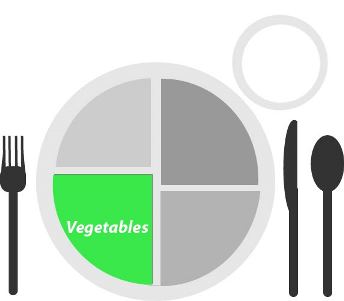
One Cup of Vegetables
- 1 cup raw, cooked, juice
- 2 cups raw leafy vegetables are equal to one cup
Vegetable Activity
Veggies on the Table
Veggies give us lots of variety. Carrots, for instance, can be eaten raw, cooked, or turned into juice. Same with many other types of vegetables.Children are more likely to eat vegetables (or any other food) if they have a role in helping to cook or prepare it. In general, cooks are less picky eaters than non-cooks.
Buy some carrots (you may substitute another vegetable) and prepare it in different ways in the next several days.
- Shred it with a hand shredder. Use it in cole slaw or in a salad.
- Make carrot sticks and dip in ranch (keep in mind it is one of the servings of oil)
- Slice carrots. You can use a special knife to make ridged edges. These can be eaten raw or cooked.
- Cook baby carrots with beef, fish or chicken. It may have less of its own flavor if cooked in the juices.
- Blend it with tomatoes and pineapples to make a juice.
Fruits
Like vegetables, fruits are a source of fiber, minerals, and vegetables. Their natural sweetness makes them a favorite.
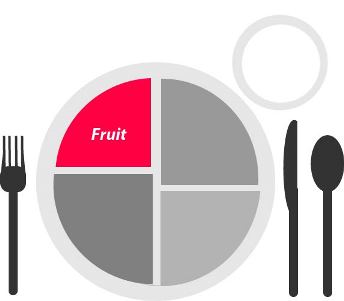
Use instead of refined carbohydrates and sweet desserts for a between meal snack or after-meal reward.
One Cup Fruit Equivalents
- 1 small apple
- 1 large orange
- 1 cup fresh fruit
- 1/2 cup dried
- 1 cup 100% juice
Applesauce Is the Boss
Delicious and Easy Homemade Applesauce
Make a different types of applesauce with different apples every day. Try combining different types of apples. Add pears to the apples one day for variety.
- 4 different apples (or pears)
- Cut and peel them. They chunks should be about the size of large marshmallows.
- Put them in a saucepan. Add water to cover the bottom of the pan. The bottom one third to one half of apples should be covered in water.
- Sprinkle with cinnamon. (Sugar is optional if the apples are not sweet enough. But try it without.)
- Simmer and stir until the apples soften and mix with the water. Keep stirring.
- Cool and enjoy.
Fruit and Vegetable Game
Fruit and Vegetable ABC's
You will need two or more students to play this game. Divide them in groups so they can talk with the other group hearing them.They need to brainstorm an ABC list of fruits or vegetables that begin with every letter. Give them a ten or fifteen minute time limit. See who comes up with the most fruits and vegetables
Dairy
Milk and soy milk are our dairy sources which are a substantial contributor of minerals.
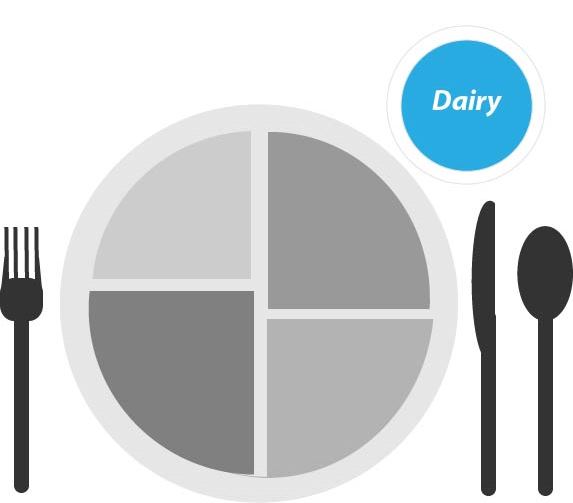
One Cup Diary Equivalents
- 1 cup milk or soymilk
- 8 oz yogurt
- 1-2 oz cheese
- 1 cup pudding
- 1 1/2 cups ice cream
Dairy Game
How Fat is Your Milk
Whole milk is 3% fat, which doesn't sound like much but it is. Low fat is 1% and skim milk has no fat.So how much fat does whole milk have. Your students will find out with this game.
You will need an empty milk container. One container can be used for up to five or six kids. If you have a larger group, you may want to use additional gallons and divide them into groups.
You will also need a permanent marker that can mark on the milk container.
Ask the student how much fat would be in the container if you took all the water out and only had fat. Let them guess by pouring water into the empty container to represent the amount of fat.
Mark each child's guess on the container. Let everyone take a turn.
If you are using a US gallon (128 ounces), three percent fat would be about 1.75 ounces.
It doesn't seem like a lot of fat does it? But low fat milk has only 1%, so it much less calories.
Let Your Light Shine
Shine through the Milk that Is
Give the kids cups of cream, whole milk, low fat milk and skim milk. If you don't have all of those, any two will work, but all four works the best.Put one cup or half a cup in similar glasses or clear disposable cups. Mix up the cups between each of these activities.
- Put them in order from fattiest to least fatty by looking out them.
- Put a spoon into the milk, then watch it poured out back into the glass.
- Feel the different textures.
- Do a blind taste test.
- Shine a strong flashlight through the different types of milk.
Nutrition Information Pieces and Game
The MatchCard provides a built in game and review system. The reusuable pieces can be cut apart and placed in the correctly location on the plate.MatchCard Science
How To Use MatchCards

Download the FREE MatchCard Science Instructor's Guide and see how MatchCards can make building their science knowledge base fun.
Nutrition, Health, and Safety Unit Study
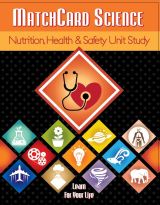
See more about the Nutrition, Health, and Safety Unit Study.
12 Science Unit Studies

Chemistry is only one of twelve complete unit studies for kids in 3rd to 8th grade.
Comprehensive objectives, hands-on projects, suggested science fair experiments, and the fun game-like MatchCards keep them interested in learning science. See all twelve MatchCard Science Unit Studies.
About Our Site
Hands-On Learning













